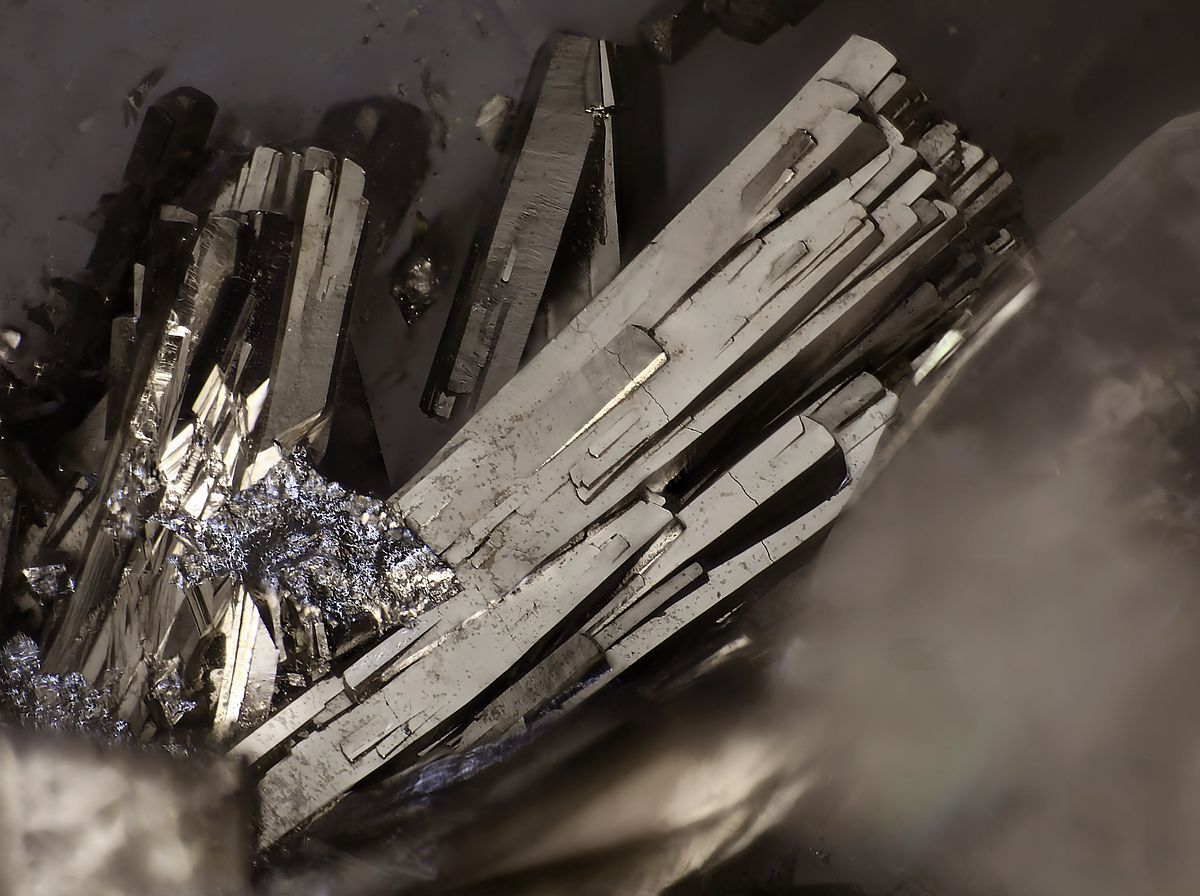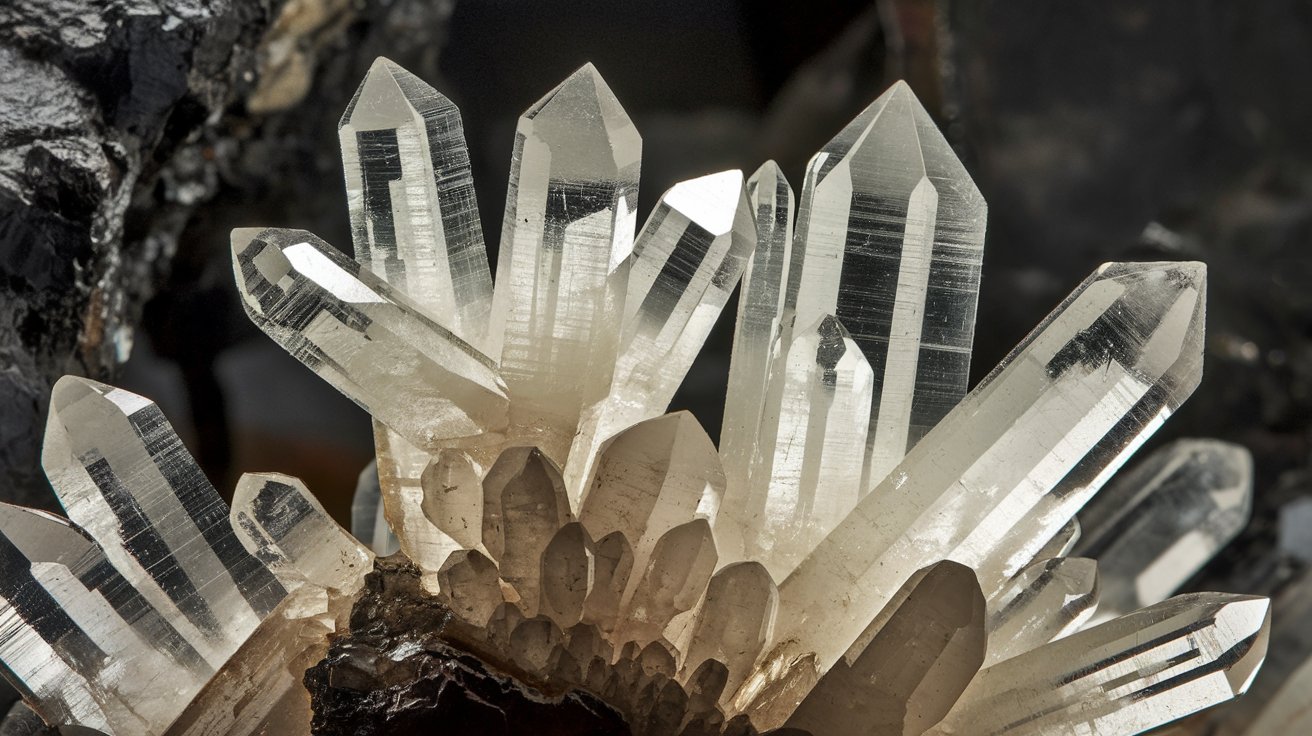
Have you ever wondered about the unique properties of alloclasite? This intriguing mineral, with its chemical formula (Co,Fe)AsS, combines cobalt, iron, arsenic, and sulfur. First described in 1866 in Romania, alloclasite stands out due to its monoclinic crystal system and perfect cleavage. Its steel-gray to silver-white color, metallic luster, and black streak make it easily recognizable. Found in various locations worldwide, this mineral often associates with others like safflorite and erythrite. Alloclasite's hardness of 5 on the Mohs scale and specific gravity of 5.91 to 5.95 highlight its distinct physical properties. Dive into these 25 fascinating facts to learn more about alloclasite's composition, formation, and significance in mineralogy.
Key Takeaways:
- Alloclasite is a fascinating mineral composed of cobalt, iron, arsenic, and sulfur. Its unique crystal structure and physical properties make it a subject worth exploring for geologists and mineralogists.
- Alloclasite forms through hydrothermal activity and is found in various locations worldwide. Its association with other minerals provides valuable insights into its geological history and formation processes.
What is Alloclasite?
Alloclasite is a fascinating mineral that intrigues geologists and mineralogists alike. Its unique properties and occurrences make it a subject worth exploring. Let's dive into the key facts about this mineral.
-
Chemical Composition
Alloclasite is composed of cobalt, iron, arsenic, and sulfur. Its chemical formula, (Co,Fe)AsS, indicates a mixed-iron and cobalt sulfosalt mineral. -
IMA Symbol
The International Mineralogical Association (IMA) has assigned the symbol Acl to alloclasite. This symbol is used to identify it in mineralogical literature.
Crystal Structure and Physical Properties
Understanding the crystal structure and physical properties of alloclasite helps in identifying and studying this mineral.
-
Crystal System
Alloclasite crystallizes in the monoclinic system, one of the seven crystal systems in mineralogy. This structure is crucial for understanding its physical properties and crystallography. -
Space Group
The specific space group for alloclasite is P21, which further defines its crystal structure and symmetry. -
Appearance
Alloclasite typically appears as columnar to radiating acicular prismatic clusters. It has an opaque steel-gray to silver-white color with a metallic luster and a black streak. -
Hardness
Alloclasite has a hardness of 5 on the Mohs hardness scale. This means it is relatively brittle and can be scratched by a copper penny. -
Specific Gravity
The specific gravity of alloclasite ranges from 5.91 to 5.95. This density is indicative of its heavy nature and can be used in mineral identification. -
Cleavage
Alloclasite exhibits perfect cleavage, meaning it can be easily split along specific planes. This characteristic distinguishes it from similar appearing minerals like marcasite.
Historical and Geographical Context
Alloclasite has a rich history and is found in various locations around the world.
-
Discovery
Alloclasite was first described in 1866 for an occurrence in Romania. This early discovery marked the beginning of its study in mineralogy. -
Name Origin
The name "alloclasite" comes from the Greek words άλλος (allos), meaning "other," and κλάσις (klasis), meaning "to break." This refers to its distinct cleavage, which differentiates it from marcasite. -
Occurrence
Alloclasite is found in various locations around the world, including Argentina, Australia, Austria, Brazil, Bulgaria, Canada, China, Czech Republic, Finland, France, Germany, Greece, India, Indonesia, Iran, Ireland, Italy, Japan, Kazakhstan, Mongolia, Morocco, Norway, Papua New Guinea, Portugal, Romania, Russia, Spain, UK, USA, and others.
Mineral Associations and Formation
Alloclasite often occurs with other minerals, providing clues about its formation and geological environment.
-
Paragenesis
Alloclasite often occurs in association with other minerals such as Safflorite, Erythrite, Fukuchilite, Arsenopyrite, and Spherocobaltite. These associations provide valuable information about its geological environment and formation processes. -
Mineral Group
As a member of the arsenopyrite group, alloclasite shares similarities with other sulfosalt minerals. This group includes minerals like arsenopyrite itself and other cobalt-iron arsenides. -
Physical Properties
In addition to its hardness and specific gravity, alloclasite is brittle and exhibits a metallic luster. These physical properties are crucial for identifying it in the field or under a microscope. -
Optical Properties
While detailed optical properties are not extensively documented for alloclasite, its metallic luster suggests that it would likely exhibit high reflectivity under light. However, precise optical data are not readily available.
Health and Safety
Handling minerals always comes with some considerations, even if specific risks are not well-documented.
- Health Risks
There is no documented information on the health risks associated with alloclasite. However, it is always advisable to handle mineral specimens with care to avoid any potential hazards.
Economic and Industrial Relevance
Alloclasite has significance in geometallurgy and the extraction of valuable metals.
-
Geometallurgy
Alloclasite is part of cobalt-bearing deposits, which are significant in the field of geometallurgy. The study of these deposits involves understanding the mineralogy, paragenesis, and metallurgical processes involved in extracting cobalt and other metals. -
Cobalt and Iron Content
The composition of alloclasite includes both cobalt and iron, which are essential for its formation. The presence of these metals in various proportions affects its physical and chemical properties. -
Arsenic and Sulfur Content
Arsenic and sulfur are also critical components of alloclasite. The combination of these elements in the mineral's structure contributes to its unique properties and reactivity.
Formation and Geological Environment
The formation of alloclasite involves specific geological processes and conditions.
-
Formation Processes
Alloclasite forms through hydrothermal activity, where hot fluids rich in metals and sulfur interact with rocks. This process can occur at various depths within the Earth's crust, leading to the formation of diverse mineral assemblages. -
Geological Environment
The geological environment in which alloclasite forms is typically associated with high-temperature and high-pressure conditions. These conditions are conducive to the formation of sulfosalt minerals like alloclasite. -
Mineral Associations
Alloclasite is often found in association with other sulfide and sulfosalt minerals. These associations provide valuable information about the geological history and evolution of the mineral deposit.
Localities and Crystallography
Alloclasite has been identified in numerous localities, and detailed crystallographic studies have been conducted.
-
Localities
Alloclasite has been identified in numerous localities around the world. These localities include both primary and secondary occurrences, reflecting its complex geological history. -
Crystallography
Detailed crystallographic studies have been conducted on alloclasite, revealing its monoclinic structure and specific space group (P21). This information is essential for understanding its optical and physical properties. -
Handbook of Mineralogy
Alloclasite is documented in the Handbook of Mineralogy, which provides detailed information on its crystal structure, physical properties, and occurrence. This resource is invaluable for mineralogists and researchers studying this mineral.
Final Thoughts on Alloclasite
Alloclasite is a fascinating mineral with a unique blend of cobalt, iron, arsenic, and sulfur. Its monoclinic crystal system and perfect cleavage make it stand out among other minerals. Discovered in 1866 in Romania, it has since been found in numerous locations worldwide. With a hardness of 5 on the Mohs scale and a specific gravity of 5.91 to 5.95, it's relatively dense and brittle. Alloclasite often forms through hydrothermal activity and is associated with minerals like safflorite and erythrite. Its metallic luster and steel-gray to silver-white color add to its visual appeal. While not extensively documented for health risks, handling it with care is always wise. This mineral's unique properties and widespread occurrence make it a significant subject in mineralogy. Understanding alloclasite provides valuable insights into the geological processes that form such intriguing minerals.
Frequently Asked Questions
Was this page helpful?
Our commitment to delivering trustworthy and engaging content is at the heart of what we do. Each fact on our site is contributed by real users like you, bringing a wealth of diverse insights and information. To ensure the highest standards of accuracy and reliability, our dedicated editors meticulously review each submission. This process guarantees that the facts we share are not only fascinating but also credible. Trust in our commitment to quality and authenticity as you explore and learn with us.


